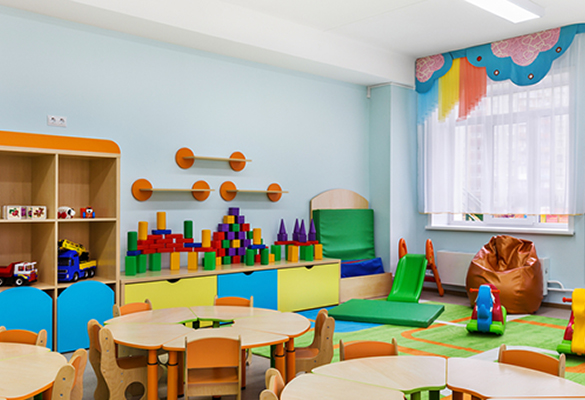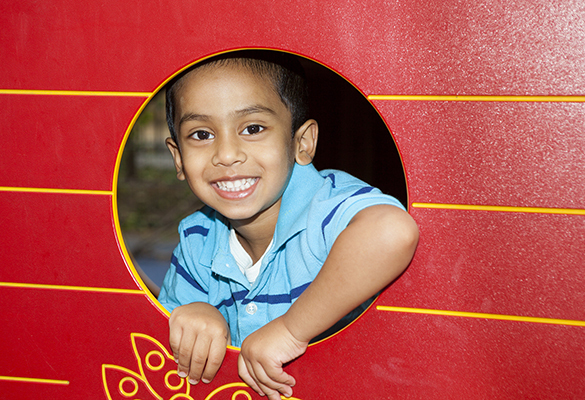The Hub
Quality Provision
Learning through play and movement, young children need an exceptionally well organised, calm environment with clearly defined areas and ample space both inside and outside, that promotes physical activity, exploration and responds to their individual interests and specific needs.
Through developmentally appropriate, open ended resources both the inside and outside provision should enable two year olds to be independent, challenged, imaginative, experiment, cooperate and collaborate through moving and doing.
How does your environment support independent learning, high levels of involvement and offer extended periods of uninterrupted play? Are children motivated, involved and engaged?
Continuous Provision
Continuous provision is the resources and areas that you have laid out for children to explore freely. They should be safe to explore, as well as challenging and engaging.
Developing and planning continuous provision
Continuous provision is not just about the provision that should be accessible, it is also all about what resources have been added to the areas of continuous provision that will allow the continuation of learning in the absence of a practitioner.
In terms of planning continuous provision, it should be linked very closely to children's assessments/observations and daily evaluations of the children's engagement with the environment.
To develop continuous provision, initially open ended resources are added to each area of the continuous provision. These resources are carefully chosen quality resources that are organised and placed in areas which are always available for children to access independently across every area of learning, both inside and outside. These support and allow children to investigate, explore and use their thinking skills.
To measure the impact of learning, along with gaining an understanding of the children's learning needs and interests; practitioners should seek to evaluate the environment daily. This should be recorded. From this daily evaluation practitioners will be able to identify relevant and interesting resources that can be added to areas that are linked to children's interests or observations. By doing this it will encourage children's engagement and in turn will move children on in their learning and development.
Making your setting welcoming to families
First impressions count, so making sure your early years setting encourages new families and carers to feel welcomed and confident in leaving their children with you is really important.
When families visit settings to choose childcare they will often be thinking and asking similar questions around the quality of provision, access to outdoors, routines, quality of diet/nutrition, staffing, trying to work out how this setting meets the specific needs of their child and if their child will be happy here.
A few tips to help make sure your setting is welcoming to new families:
- Create a bright, warm and welcoming setting, with a home from home feel
- Greet parents and children as they walk in
- Have displays of what the children have been doing and/or inspiring quotes on the walls
- Add a well organised, uncluttered parent notice board with key information, menus, current newsletters and key dates on display
- Create a brochure, pamphlet or a settling in guide for visiting parents to take away which shows the daily routines, outings, examples of experiences on offer
- Have an accessible website with information about your setting and photos of children at play
- Get down on our hands and knees and explore your setting from a 2 year old's perspective, checking it is warm and engaging
Many parents will decide whether to attend your nursery or not based on the first impression, often minds are made up from the initial contact with the nursery. Being polite, friendly and professional counts.
All staff have a shared responsibility to make parents feel welcome and valued, especially if it is a first visit. Managers need to ensure their staff have had training to work with families so they are well informed, confident and capable of answering questions’ parents may ask.
First impressions are a decision maker when choosing a setting. Parents need to leave the nursery knowing that they can trust and build mutual respect for the practitioners who are friendly and have a genuine interest of the child at heart.
Provision Guides
Book Area
You can easily create book friendly spaces that maximise deep levels of engagement, where children are drawn in to pick up books, listen to and share stories. You could make it a comfy enticing, cosy space with an indoor tipee or lots of cushions and blankets and of course fill it with books they can reach and sit and look at whenever they want.
Reflection: Does your book area offer:
- a cosy space with easy access to books & props, books displayed cover facing
- a wide variety of books reflecting diversity, fiction, non-fiction, flap books, recipe books, home-made books with photographs, dual language
- story sacks, puppets and props to retell stories
- a space for adults to share books
Create a book area guidance 2 year olds
Book reading list for 2 year olds
Block Play
Research suggests that very young children develop better language skills when they engage in regular block play both in the home and in the nursery.
Reflection: Does your block play area provide:
- Different sets of wooden and sponge blocks varying in shape and sizes
- Role play props
- Construction kits with interlock e.g. duplo, mega blocks, stickle bricks
- Small world resources nearby for easy access
- Large, light fabrics, tarpaulins, pegs, string ties for den making
The Making the Most of Block Play is designed to support practitioners to develop effective block play for two year olds in their provision.
Home Corner
Role play develops a child’s imagination. It supports cognitive development, improves social skills, grows children’s creativity and problem-solving skills and offers opportunities for young children to explore and understand events that they have observed or experienced in real life.
Reflection: Does your domestic role play offer:
- multicultural fabrics & costumes, bags, purses/wallets, hats reflecting gender/diversity
- babies, dolls and clothes
- kitchen and cooking props
- phone, diaries,
- display photographs of two year olds and their families at home
Domestic Role Play information and guidance 2 year old. This guide is intended to support the development of the home corner to meets the specific needs of two year olds in your setting.
Water Play
With carefully chosen open ended resources, linked to children’s interests and development, young children can be supported to investigate, explore and think, follow their own lines of enquiry and make choices independently and always get it right. In water play they can be the experts.
Reflection: Does your provision offer:
- deep enough water to scoop, fill up buckets and bottles and transport.
- varied sized containers, bottles, funnels, spray bottles, tubing, milk crates, buckets, washing up bowls, washing up liquid, sponges and towels, large paint brushes, rollers and window squidges
- role play props
- loose parts & natural objects - shells, stones
- presented in differing ways e.g. bubbles, colour change, ice cubes
Water play guidance 2 year olds - this guide is intended to support practitioners to develop water provision both inside and outside that foster’s curiosity, imagination and experimentation of two year olds.
Musical Play
Music is one of many languages a child can communicate. Music supports developing fine and gross motor skills. Music helps to build a two -year old’s coordination, strength and balance as they move to the beat, wiggle, stomp and jump up and down to songs.
Reflection: Does your musical and movement provision offer:
- variety of musical instruments - percussion, home-made reflecting cultural diversity
- music player with music from a wide range of cultures e.g. nursery rhymes, classical, pop, African, Bollywood
- space to dance and play instruments with scarves, ribbons, streamers, mirrors
Creating musical provision for 2 year olds. This guide is intended to support practitioners develop effective musical provision for two year olds. Musical Development matters
Sand Play
Sand trays are busy areas where social interaction is inevitable. By making your sand provision communication friendly, varied, well organised, young children will learn to wait, make conversation and develop their attention span
Reflection: Does your sand provision offer:
- Enough sand for a few children to dig, scoop, fill up large buckets
- Sand presented in different ways e.g. tray, boxes, on the floor, inside and outside
- Role play props
- Loose parts e.g tubes, lolly sticks,
- Natural objects e.g. pine cones, shells, feathers
- Dry and wet sand
- Open ended and freely accessible resources that promote independence and free choice?
Creating sand play for two year olds - this guide is intended to support practitioners to develop effective sand provision for two year olds that supports independence, language and social skills.
Physical Play
The importance of movement and action is key to their learning and development. It supports physical health, personal and social well-being. Young children use their whole bodies to explore, think and communicate. Being active every day provides a foundation for a healthier and happier life
What does movement look like in your setting?
Do adults support the development of vocabulary and communication around movement and being physically active through naming body parts, actions, prepositions during play and encourage children to reflect on their activity?
Reflection: Does your setting support fine motor development by offering:
- small building resources
- manipulative resources e.g. threading, nuts and bolts, shape sorters, train tracks
- varied puzzles - peg, interlocking, slot in pieces, buttons and zips
- opportunities throughout the environment to practice fine motor skills
Reflection: Does your setting support gross motor development by offering:
- space both inside and outside to develop physical skills e.g. climbing, jumping, balancing, throwing, catching, rolling
- portable equipment e.g. A-frames, planks, tunnels, tyres offering stimulating physical challenges
- space for wheeled vehicles e.g. wheel barrows, trolley, buggy, scooters, bikes
- loose parts and den building opportunities e.g. tubes, guttering, crates
Creating a space to be physical for two year olds - this guide is intended to support practitioners to develop space and resources both inside and outside that support two year olds movement activities allowing them to be active for most of the day in different ways.

